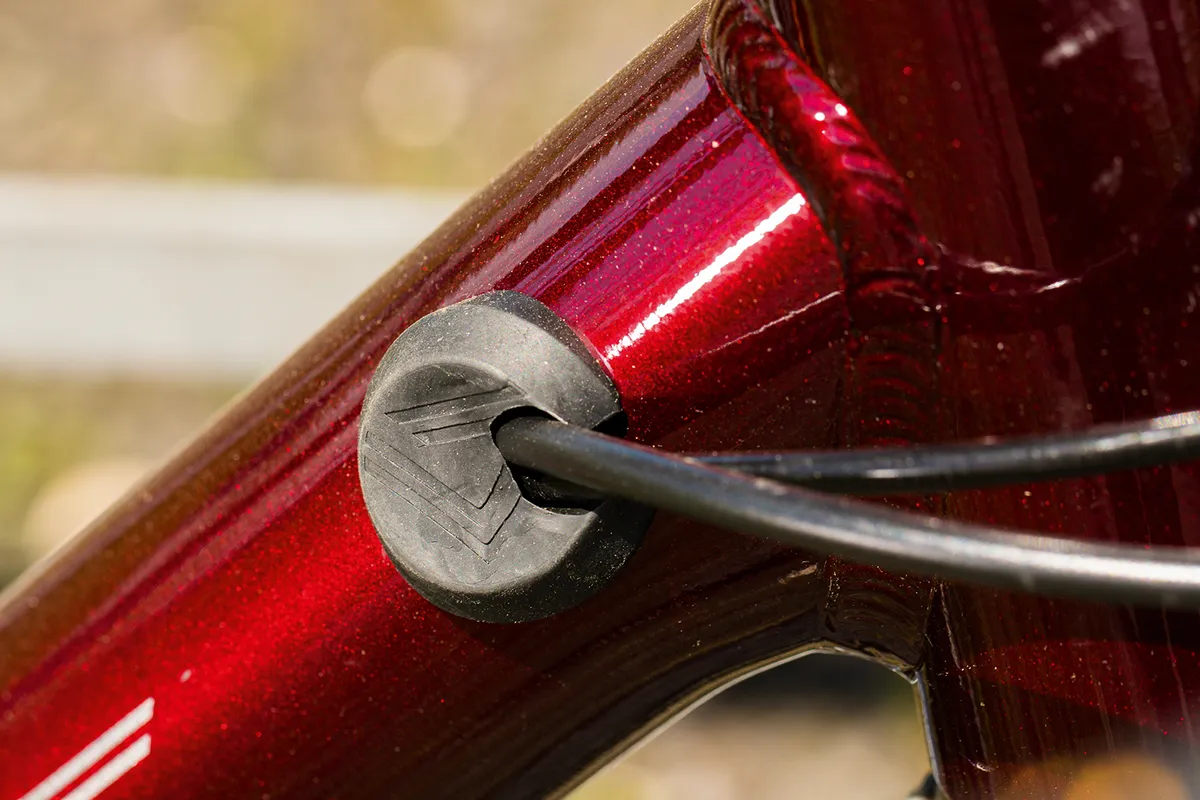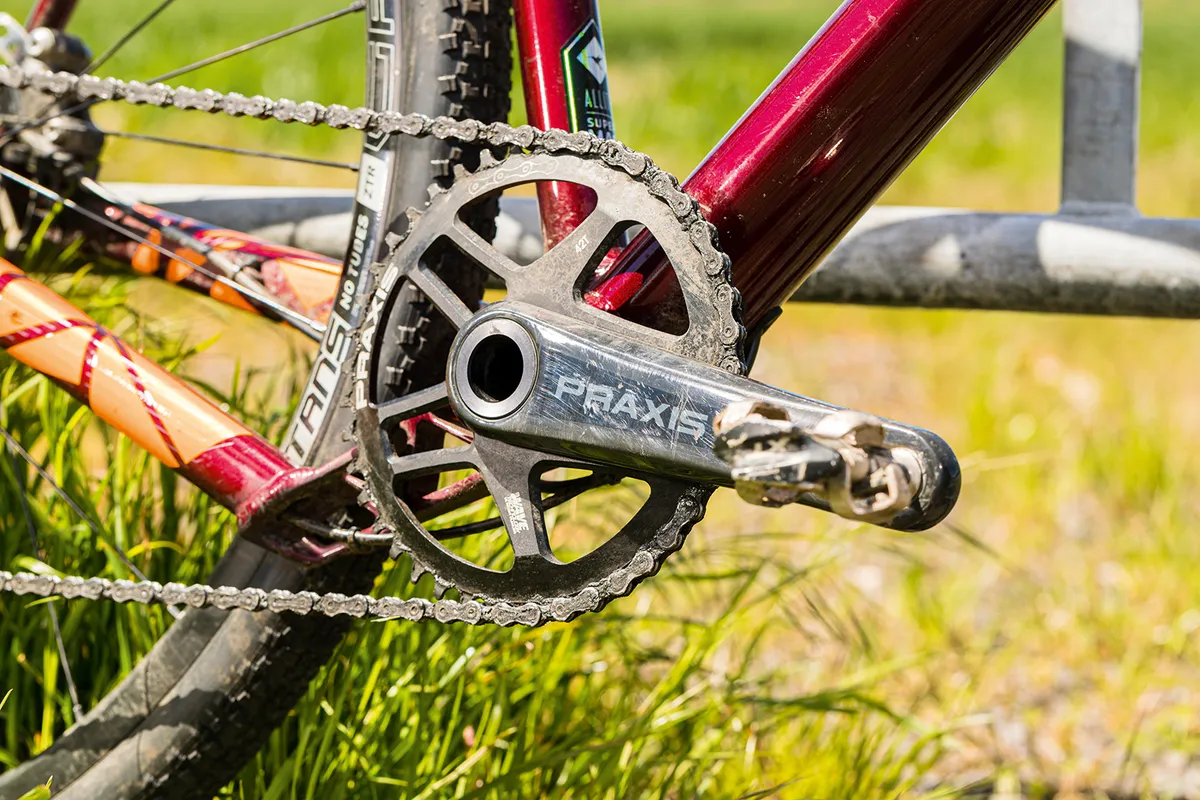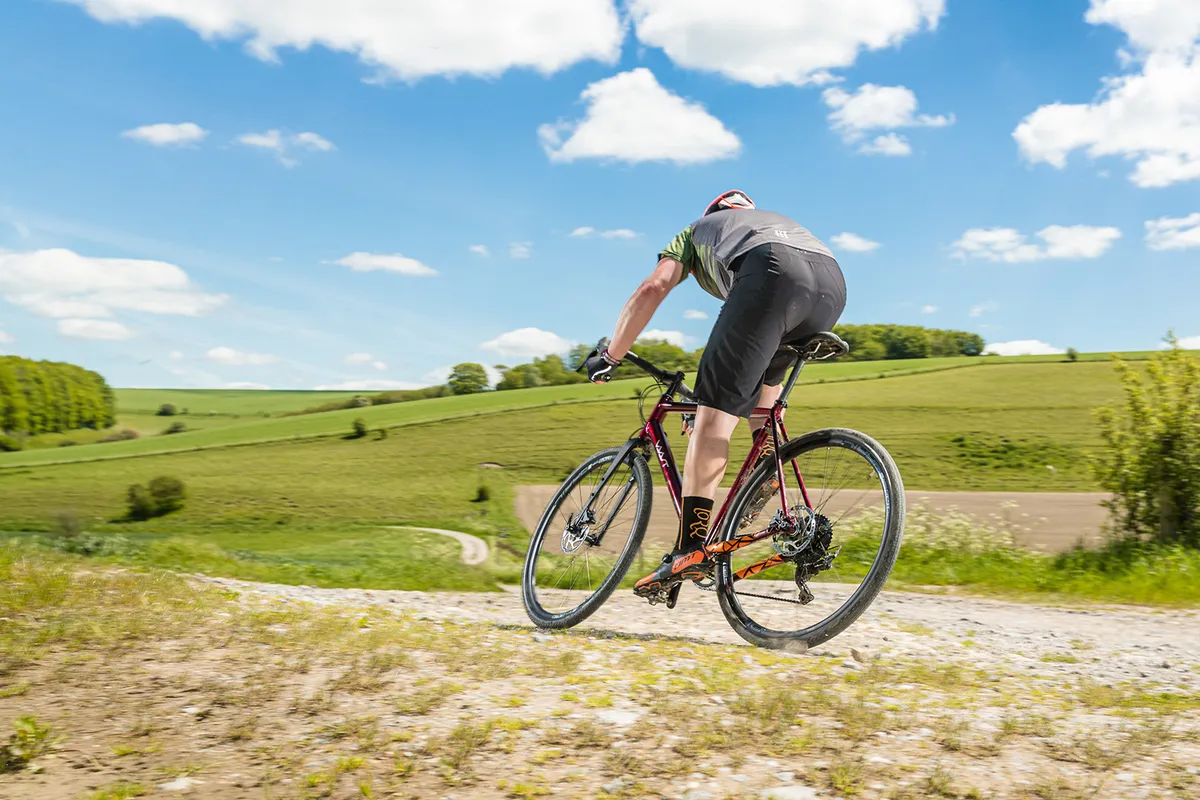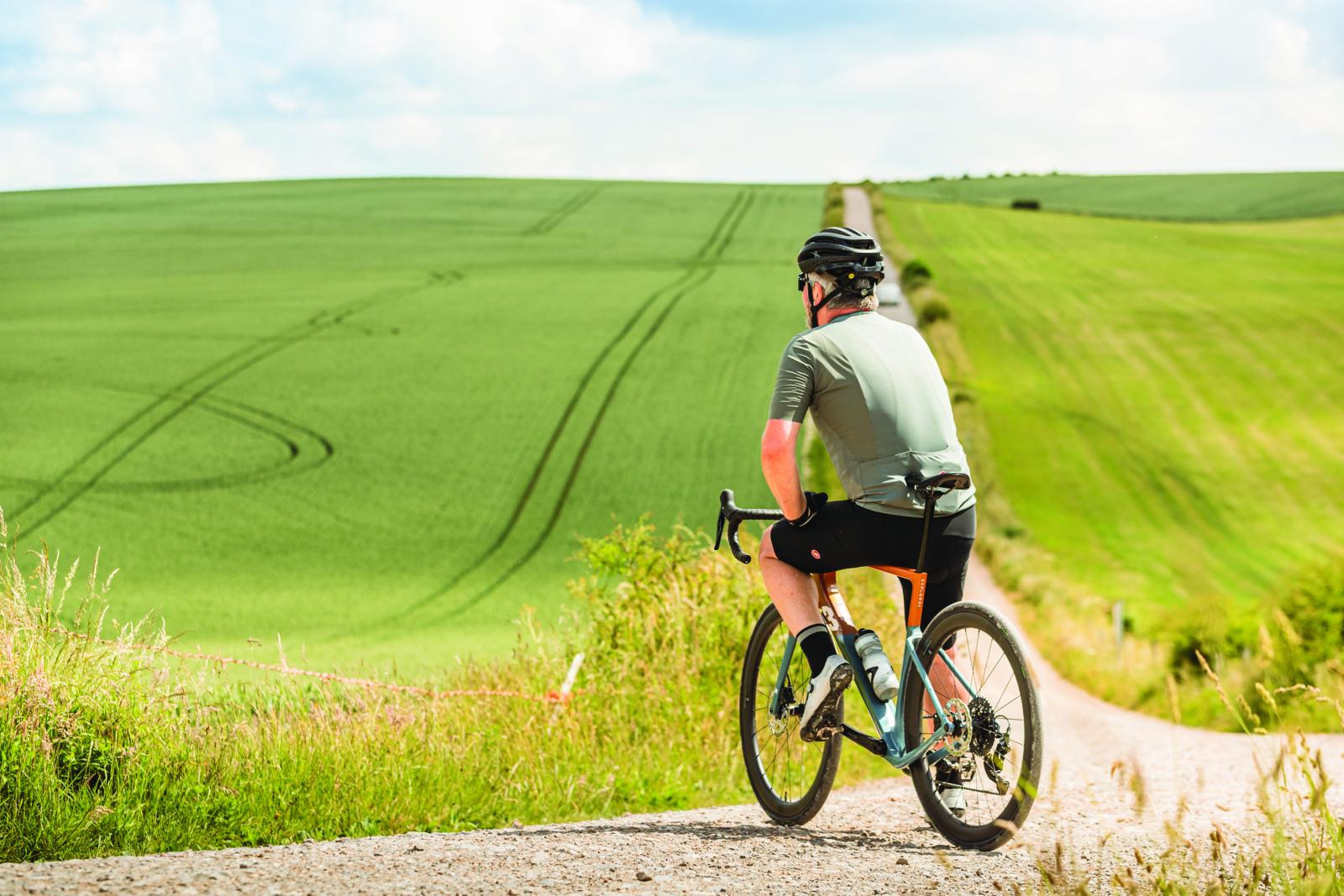The unique selling point to Vaast’s well-priced gravel bikes is the material that’s used to build them. Fellow American company Allite produces a magnesium-alloyed tubeset called Super Magnesium, which is an alloy that was originally designed for use in the world of defence and aviation but used on the A/1 by Vaast.
Magnesium alloys have been used in bikes before. Initially with the radically designed Kirk Precision in the late eighties and early nineties, created by one-time Ford employee Frank Kirk. The odd-looking frame was apparently inspired by the bumper on the Ford Sierra.

Italian racing legends Pinarello also dabbled with magnesium back in 2004 with a magnesium alloy-framed Dogma at a time when most of its rivals were using aluminium or combining aluminium and carbon.
The claim behind magnesium alloy is intriguing. Vaast tells us that it’s lighter than aluminium, steel and titanium, yet stronger than steel and aluminium.
It’s also more corrosion-resistant than aluminium and steel. Plus, if you’re at all concerned about the carbon footprint of the manufacturing process of a bike, then Vaast states that mag-alloys use 40 per cent less energy than traditional aluminium or steel frames, and unlike carbon the mag-alloy is 100 per cent recyclable.
That’s all well and good and it amounts to a respectable 1,100g frame weight but Vaast also claims that the ride quality is more akin to steel and titanium than the often stiff feel of aluminium.
I’ve been looking forward to putting Vaast’s claims to the test on its debut gravel machine: the A/1.
Vaast A/1 special features

The A/1’s design mixes the traditional with some sharp details. The internal cable routing is a nice touch while oversized, water-tight grommets give the A/1 a proper outdoorsy, off-road feel.
The corrosion proofing comes courtesy of a treatment that Vaast uses post welding in which the frames are bathed in a process called ‘plasma electrolytic oxidation’.
This treatment produces a ceramic-like coating both inside and outside of the frame, which means that the magnesium alloy is protected from rust. And, if you crash the bike and slide it down the road, the magnesium in the alloy won’t spark and flare like a camera flash – for those of you who can remember their chemistry classes!

The back end has asymmetric chainstays with the driveside stay radically dropped to facilitate much bigger tyres and dual-wheel size compatibility (40c in 700 and 47c in 650b) while maintaining chainline.
Instead of using a bent tube to drop the stay, Vaast has a truss-like structure that helps to keep the back end stiff, and it looks suitably different too. It’s continued the truss motif at the other end of the stays with the dropout made with a similar design touch.
The frame is complemented by a full carbon fork that comes complete with rack and mudguard mounts. The frame itself features twin bottle bosses and rack and mudguard fittings.
If you’re thinking this puts it into the bikepacking/commuter realm, well I’ve no doubt the A/1 would do a very decent job of that, however, its spiritual home – at least in terms of geometry – is that of a fast gravel grinder that’s perfect for fun days out and a spot of rough road racing.
Vaast A/1 geometry
With its 72-degree head angle and steeper 72.5-degree seat angle on my size large test bike it feels direct and snappy to steer.
The 425mm chainstays similarly keep things tight (for a gravel bike) at the rear and the 595mm stack height and 395mm reach keep the riding position sporty.
| | S | M | L | XL |
|---|---|---|---|---|
| Seat angle (degrees) | 72.5 | 72.5 | 72.5 | 72.5 |
| Head angle (degrees) | 70 | 71 | 72 | 72 |
| Chainstay (mm) | 425 | 425 | 425 | 425 |
| Seat tube (mm) | 520 | 540 | 560 | 580 |
| Top tube (mm) | 534 | 557 | 583 | 605 |
| Head tube (mm) | 115 | 140 | 170 | 195 |
| Bottom bracket drop (mm) | 68 | 68 | 68 | 68 |
| Wheelbase (mm) | 1,008 | 1,023 | 1,038 | 1,061 |
| Standover (mm) | 774 | 797 | 821 | 841 |
| Stack (mm) | 536 | 563 | 595 | 620 |
| Reach (mm) | 365 | 380 | 395 | 410 |
| Crank length (mm) | 170 | 172.5 | 172.5 | 175 |
Vaast A/1 ride impressions
I like that Vaast includes internal routing for a dropper post (I’m a big fan of droppers for gravel descending).
The 1x GRX drivetrain performed admirably with slick shifts and good chain retention from the clutch-equipped mech. With the clutch engaged there was no sign of chain slap even on the roughest tracks, and the sharp-looking and stiff Praxis Zyante carbon chainset is a real highlight on a bike at this price.
I liked the simple alloy cockpit with the reduced length (90mm) stem and a bar that has just enough flare for comfort without getting into the ridiculous extremes I’ve tried on some dedicated ‘gravel’ bars.
The bar and stem, along with the seatpost, are all solid and exactly what you’d expect for the money, and I was a big fan of the WTB saddle.
The Stan’s rims are excellent at retaining tubeless air pressure and seal so I had no reservations running the Maxxis tyres at super-low tyre pressures on a particularly wet, muddy test loop. The Ramblers are a great tyre in the dry but in the wet they needed the extra bite afforded by being able to spread and squish.
Kit and components aside, where the A/1 really shines is in its ride quality. The frame comes alive when the going gets rough with a sprightly spring to the tubing that’s as stiff as it is responsive, yet it controls vibrations and knocks with a wonderfully softening touch.
Up front the stiff, straight carbon fork is slightly at odds with the supple rear (I’d love to try the A/1 frame with a short travel gravel suspension fork, such as Lauf’s Grit SL, MRP’s new Baxter or Cannondale’s Oliver), though it tracks straight and feels great on the road.
The lightness is an absolute boon on the climbs with the responsive handling making it fun. On descents, it was only the limit of grip of the tyres and the fork’s chopping over ruts that held me back.
Seatpost problem

I like that Vaast has adopted a threaded bottom bracket to avoid any noise issues but, nevertheless, the A/1 wasn’t as quiet as I’d have liked.
No matter what I did with the seatpost (cleaned and greased the post, then cleaned and greased the frame) it didn’t stop creaking throughout the entire test period.
After I swapped it out for a brief ride with one of my own carbon posts I found that it didn’t make as many protestations.
Vaast A/1 bottom line
Overall the A/1 is a brilliant gravel chassis and I’m hugely impressed with the package too: a good selection of named parts, excellent wheels and smartly thought-out, own-brand bits make this a good-value purchase.
If Vaast can cure the creaky post interface it’s onto a winner. As it stands the A/1 is a smart machine made of a smart material at a very smart price.
Product
| Brand | vaast |
| Price | 2469.00 GBP,2500.00 USD |
| Weight | 9.4600, KILOGRAM (L) - |
Features
| Fork | Carbon |
| br_stem | Vaast Allroad Pro alloy |
| br_chain | KMC X11 Anti Rust |
| br_frame | Allite Super Magnesium |
| Tyres | Maxxis Rambler 38c |
| br_brakes | Shimano GRX RX400 hydraulic disc |
| br_cranks | Praxis Zyante carbon 42t |
| br_saddle | WTB Silverado |
| br_wheels | Stans Grail S1 ZTR |
| br_shifter | Shimano GRX RX600 |
| br_cassette | Shimano 11-42 |
| br_seatpost | Vaast carbon |
| br_handlebar | Vaast Urban pro alloy |
| br_bottomBracket | Praxis T47 IB Enduro Bearings |
| br_availableSizes | S, M, L, XL |
| br_rearDerailleur | Shimano GRX |








